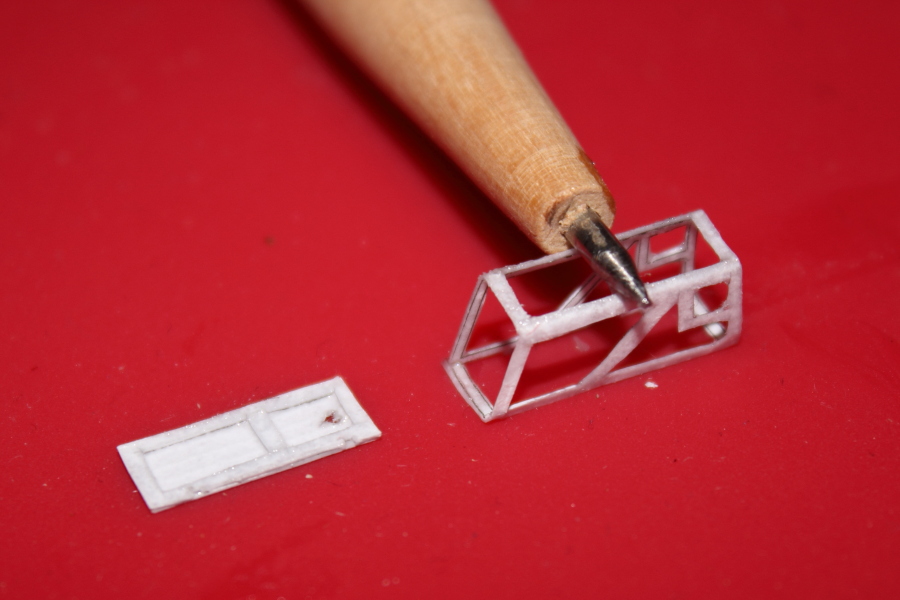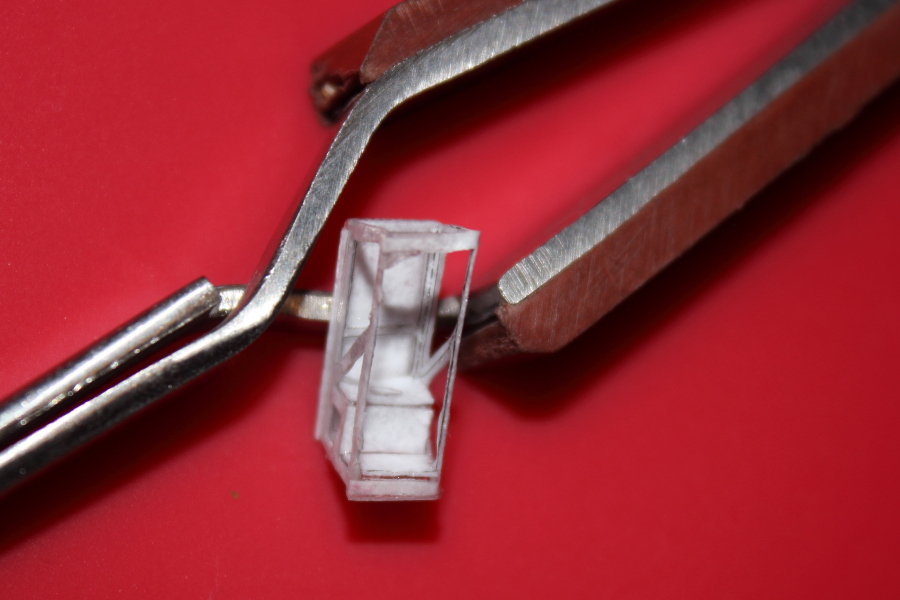|
Der erste „echte“ Artikel für 3 ohne F ist ein Rückblick auf die eine oder andere Modellbau und Konstruktionsarbeit der vergangenen Jahre. |
This first „typical“ entry under the 3 without F heading will be a look back on one or another modeling and construction work of recent years. |

|
Neben der Herstellung von Holzbausätzen war der Laser auch ein willkommenes Werkzeug, um zukünftige Ätzteile zunächst aus Papier und Karton zu schneiden und so vorab ihre Funktion und Passform zu testen. |
The lasercutter was not only usefull for kit production, but also helped in the design of kits from etched sheet brass: Cutting the proposed etching from cardboard was an easy and economical way to check for snug fit and function before „toying“ with acids. |

|
Nachdem der Laser das „respektable“ Alter von knapp 3 Jahren erreicht hatte, wurde deutlich, dass auch ein höherer Preis keine Haltbarkeitsgarantie ist … der Laser fiel nach mehreren kleinen Defekten schließlich mit einem Controller- und Antriebsschaden aus. Da eine Reparatur auch durch den altersbedingten Leistungsverlust der Laserröhre wirtschaftlich nicht sinnvoll war, habe ich mich von dem Laser wieder getrennt. Da ich nicht der große Lötmeister bin, werde ich nur in Ausnahmefällen Messing-, Kupfer-, oder Neusilber-Feinbleche verwenden. Statt dessen kommt, auch dank der guten Erfahrungen mit den Ätzblech-Simulationen, neben Holz vor Allem Karton als „Blechersatz“ zur Verwendung. Wo Gussteile erforderlich sind, werden diese aus Weißmetall oder Bronze bestehen, auf Zink-haltige Legierungen (Messing) möchte ich verzichten, da ich im offenen Tiegelofen schmelze, bzw. in der Flamm-Schleuder gieße und mir dabei zuviel Zinkschnee entsteht. Der erste Schritt in Richtung (mehr) Karton im Modellbau war dann die für den privaten Modellbau freie „Neuauflage“ des europäischen Klohäuschens in Spur N (1:160), als Papier-Baubogen zum Selbstdrucken: |
After the lasercutter reached the „decent“ age of nearly three years, it became obvious, that a higher price not necessarily comes with higher durability … following several minor failures finally the main board and part of the servo drives packed up. Since a repair was no more economical, the laser tube already had lost about 25% of its power, I returned the lasercutter. Since I am not the master of soldering, I will use brass, copper, or nickel-silver sheet only exceptionally. Instead of sheet metal I will use wood and what’s more, cardboard as replacement, especially after the positive experience simulating etched brass with laser cut cardboard. For cast parts I will rely on white metal, or bronze, while passing on any Zinc-containing alloys like brass. Using Zinc-containing alloys would result in an excess risc of zinc fever, as I am melting in an open crucible and casting in an open centrifugal flame casting machine. The first step in this new direction to preferably using cardboard in my modeling was the re-issue of my N-scale (1:160) kit of a European style outhouse. This kit is designed for home-printing on heavy paper, and is offered as a free download for personal use. |

Download:
Klohäuschen Baubogen 1:160 / Outhouse Heavy Paper Kit 1:160
|
Inzwischen neigt sich auch die aktuelle, berufsbedingte Modellbau-Pause dem Ende entgegen. Damit kann das nächste Projekt starten: |
In the meantime my modeling had to take an occupational brake. Since this finally comes to an end, I soon can start a new project: |










